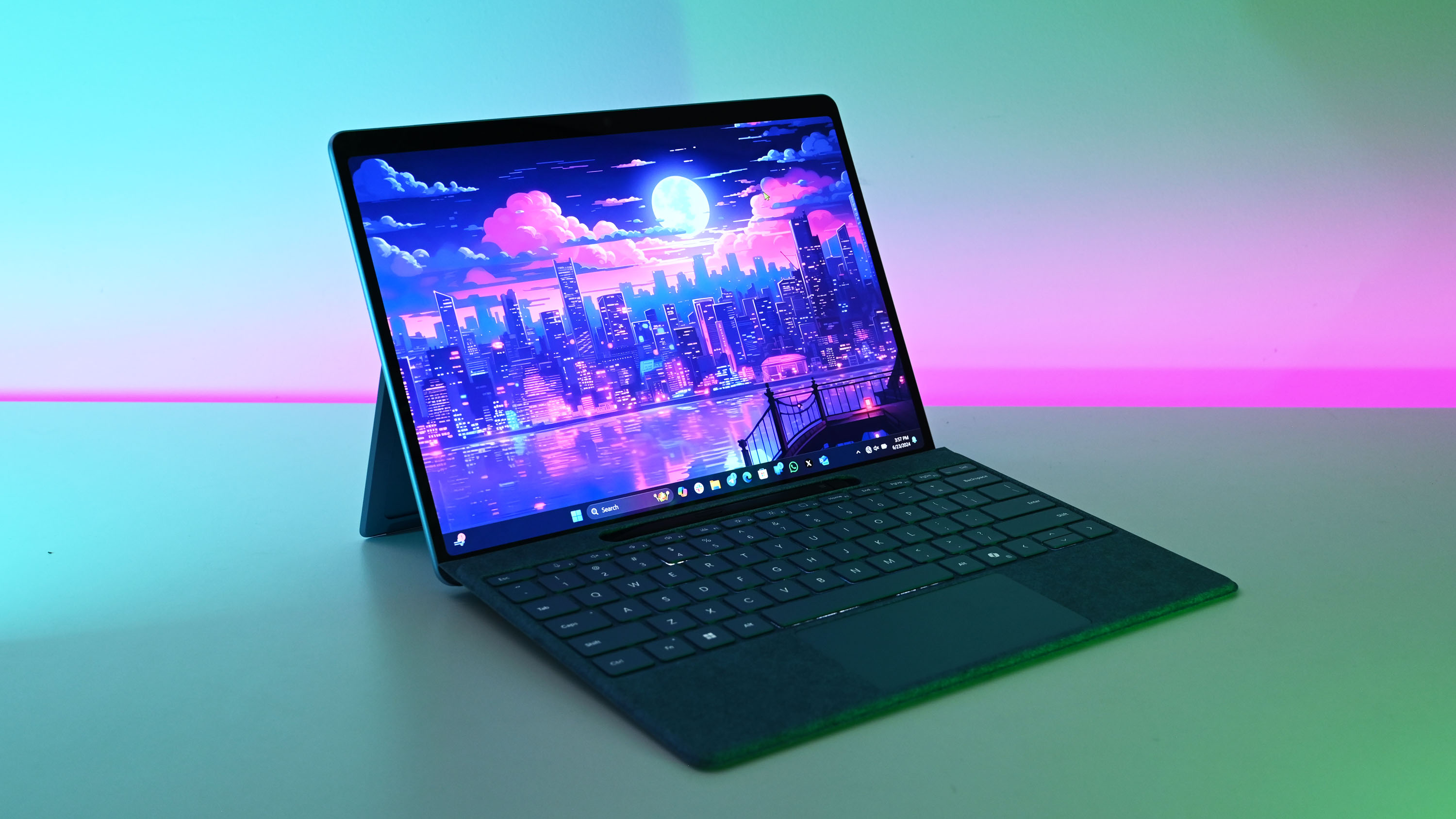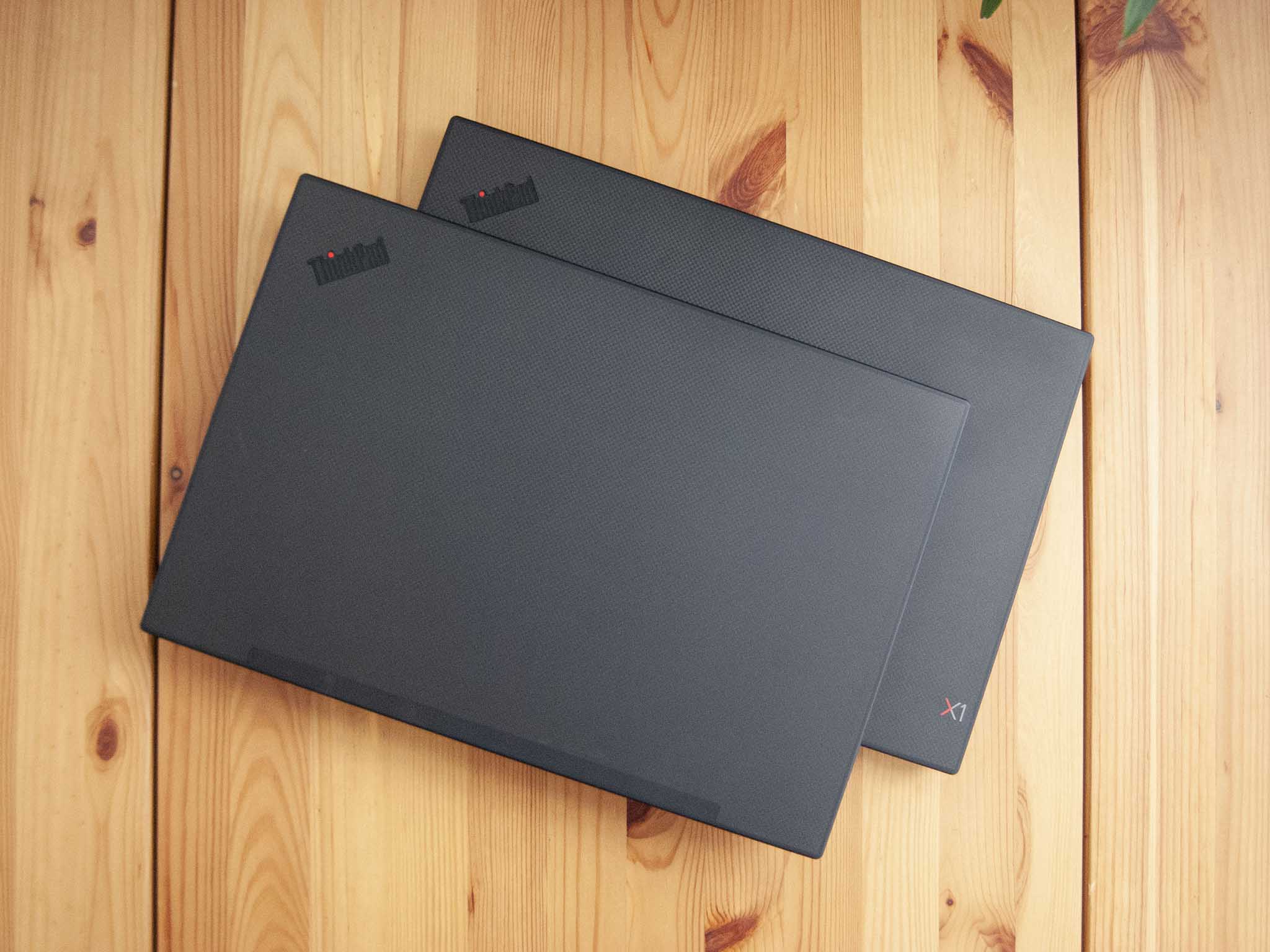
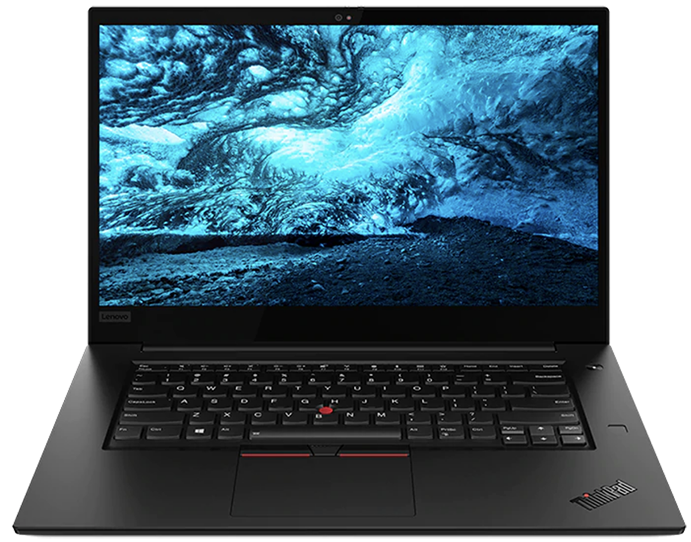
Better option for most people
The ThinkPad X1 Extreme (Gen 2) is an outstanding laptop that's suited for those who don't need specialized Xeon and Quadro hardware or ISV certifications. It still manages to deliver awesome performance with NVIDIA GTX 1650 graphics card (GPU), up to an Intel Core i9-9880H processor (CPU), and up to 64GB of DDR4 RAM.
For
- Stocked with security features
- Stunning 4K OLED touch display option
- Perfect keyboard
- NVIDIA GTX 1650 dedicated GPU
- Upgradeable internal hardware
Against
- Quite expensive
- Battery won't last a full day
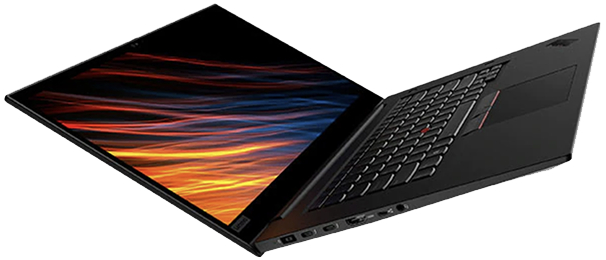
Mobile workstation
The ThinkPad P1 (Gen 2) sets itself apart from the X1 Extreme with optional workstation hardware — including Intel Xeon E-2276M CPU, NVIDIA Quadro T2000 GPU, and error-correcting code (ECC) RAM — and a long list of independent software vendor (ISV) certifications.
For
- Optional Intel Xeon CPU
- NVIDIA Quadro dedicated GPUs available
- ECC RAM
- Plenty of ISV certifications
- Upgradeable internal hardware
Against
- Battery won't last a full workday
- True workstation models are expensive
The second-gen ThinkPad P1 and ThinkPad X1 Extreme are both powerful business PCs that demand a relatively high price. Let's take a look at what exactly sets them apart to help you decide on which one makes the most sense for you.
ThinkPad X1 Extreme vs. Lenovo ThinkPad P1 tech specs
| Category | ThinkPad X1 Extreme (Gen 2) | ThinkPad P1 (Gen 2) |
|---|---|---|
| Processor | 9th GenIntel Core i5-9300HIntel Core i5-9400H vProIntel Core i7-9750HIntel Core i7-9850H vProIntel Core i9-9880H vPro | 9th GenIntel Core i5-9400H vProIntel Core i7-9750HIntel Core i7-9850H vProIntel Core i9-9880H vProIntel Xeon E-2276M vPro |
| RAM | 8GB, 16GB, 32GB, 64GBDDR4-2666MHz | 8GB, 16GB, 32GB, 64GBDDR4-2666MHzECC or non-ECC |
| Graphics | NVIDIA GTX 1650 Max-Q (4GB) | Intel UHD Graphics 630NVIDIA Quadro T1000NVIDIA Quadro T2000 |
| Storage | 256GB, 512GB, 1TBM.2 PCIe SSD | 256GB, 512GB, 1TB, 2TB, 4TBM.2 PCIe SSD |
| Display | 15.6 inchesFHD IPSFHD IPS, Dolby Vision HDR 400UHD IPS, Dolby Vision HDR 400UHD OLED, touch, Dolby Vision HDR 500 | 15.6 inchesFHD IPSFHD IPS, Dolby Vision HDR 400UHD IPS, Dolby Vision HDR 400UHD OLED, touch, Dolby Vision HDR 500 |
| Ports | Two USB-A 3.1Two Thunderbolt 3HDMI 2.0Ethernet extension connector3.5mm audioSD card reader | Two USB-A 3.1Two Thunderbolt 3HDMI 2.0Ethernet extension connector3.5mm audioSD card reader |
| Audio | Dual 2W speakersDolby Atmos | Dual 2W speakersDolby Atmos |
| Wireless | Intel Wireless-AX200 (2x2)802.11ax (Wi-Fi 6)Bluetooth 5.0 | Intel Wireless-AX200 (2x2)802.11ax (Wi-Fi 6)Bluetooth 5.0 |
| Camera | Front-facing 720p | Front-facing 720p |
| Security | Smart Card reader (optional)IR cameraThinkShutter webcam coverdTPM 2.0Fingerprint reader | Smart Card reader (optional)ThinkShutter webcam coverIR cameradTPM 2.0Fingerprint reader |
| Touchpad | PrecisionTrackPoint system | PrecisionTrackPoint system |
| Battery | 80Wh135W AC adapter | 80Wh135W AC adapter |
| Dimensions | 14.24 x 9.67 x 0.74 inches(361.8mm x 245.7mm x 18.7mm) | 14.24 x 9.67 x 0.74 inches(361.8mm x 245.7mm x 18.7mm) |
| Weight | Non-touch: 3.75 pounds (1.7kg)Touch: 4.0 pounds (1.81kg) | Non-touch: 3.75 pounds (1.7kg)Touch: 4.0 pounds (1.81kg) |
ThinkPad X1 Extreme vs. Lenovo ThinkPad P1 design and features
Physically, the X1 Extreme and P1 are nearly identical. Both use the same aluminum alloy chassis, have a carbon fiber finish (UHD models) or black paint (FHD models) on the lid, and have the same port selection. Both laptops have undergone MIL-STD 810G testing to prove their resilience to conditions above what you'd normally find in an office setting. Weight will change a bit depending on the type of display and internal hardware you choose, but dimensions remain the same. The X1 Extreme has a small "X1" logo on the lid, but that's about the only real difference design-wise.
Port selection is varied enough that you shouldn't have any issues connecting your favorite accessories, and dual Thunderbolt 3 ports mean you can connect a powerful docking station for expanded connectivity. An SD card reader on both laptops makes it easy to handle photography work, and an optional Smart Card reader is there for added security. On that note, these ThinkPads also come equipped with a fingerprint reader, dTPM 2.0 chip, optional IR camera, and webcam shutter for extra peace of mind.
The keyboard is the same for both models, and it's absolutely fantastic. I've been using either the X1 Extreme or the P1 as a daily driver for more than a month, and going back to any other keyboard is a pain. Spacing is spot on, travel is just right, and there's a backlight to help work after hours. The usual TrackPoint system is present for those who prefer the red nub and physical buttons over the Precision touchpad. Audio from dual 2W speakers is adequate for most scenarios, with a boost from Dolby Atmos. Speakers are down-firing so they do get a bit muffled.
ThinkPad X1 Extreme vs. Lenovo ThinkPad P1 display
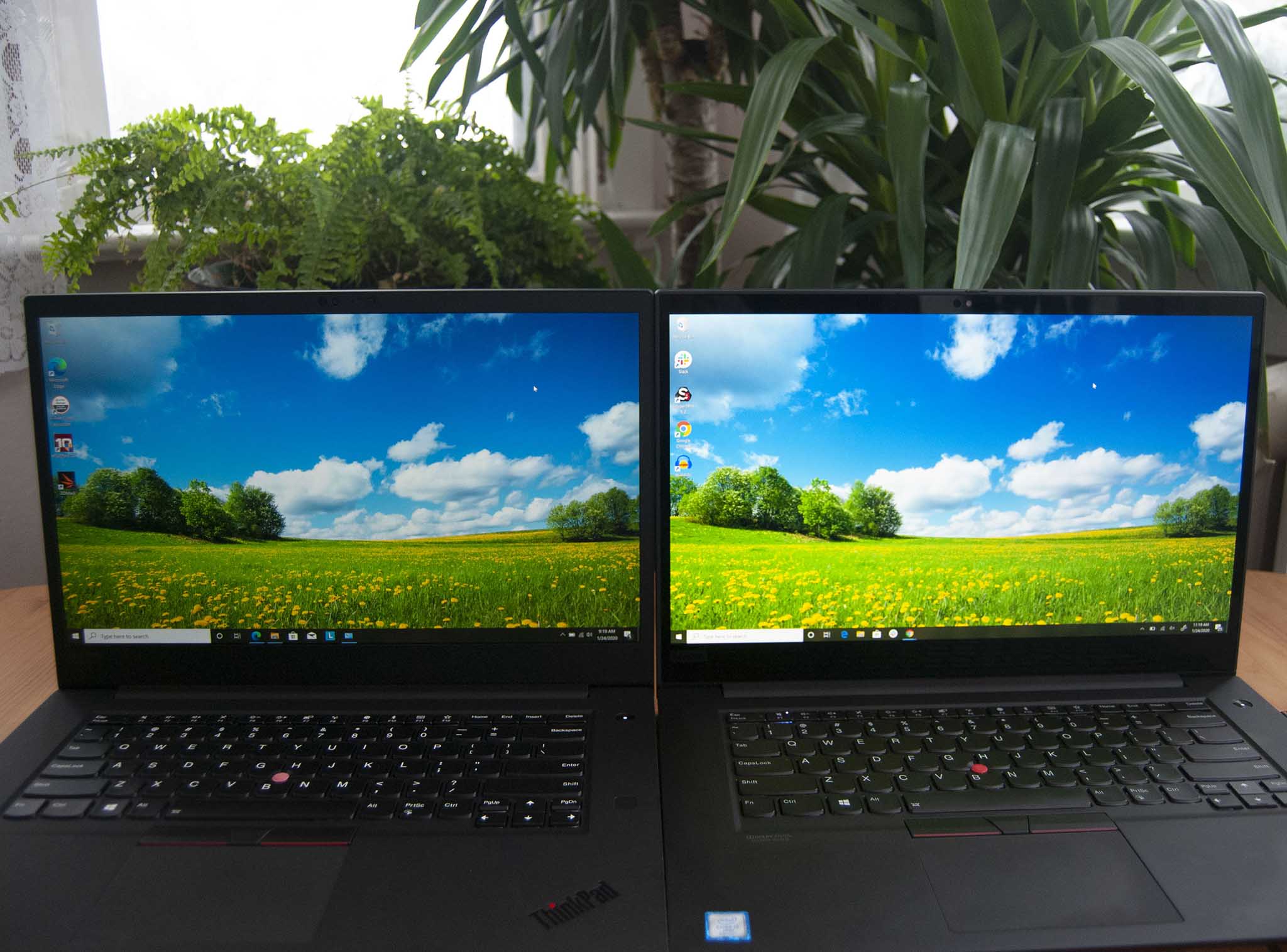
Whether you choose the X1 Extreme or the P1, you'll have access to the same display options. Baseline models come with a 1920x1080 (FHD) resolution, IPS panel, anti-glare finish, and can hit about 300 nits brightness. A step up includes an FHD resolution, IPS panel, and anti-glare finish, but it includes Dolby Vision HDR 400. Both of these do not have any touch function.
Moving into the 3840x2160 (UHD) options, Lenovo offers one non-touch with Dolby Vision HDR 400, anti-glare finish, and IPS panel. It is understandably more expensive than the FHD models, but it isn't the most expensive. You'll pay extra for a UHD OLED touch display with Dolby Vision HDR 500, but it does offer the most pleasing picture with accurate color reproduction across color gamuts, including DCI-P3.
While these displays are available in both laptops, it seems that only the P1 offers X-Rite Pantone color calibration straight from the factory. This is an optional feature and does cost extra, but it's there for those who need it.
Get the Windows Central Newsletter
All the latest news, reviews, and guides for Windows and Xbox diehards.
ThinkPad X1 Extreme vs. Lenovo ThinkPad P1 performance
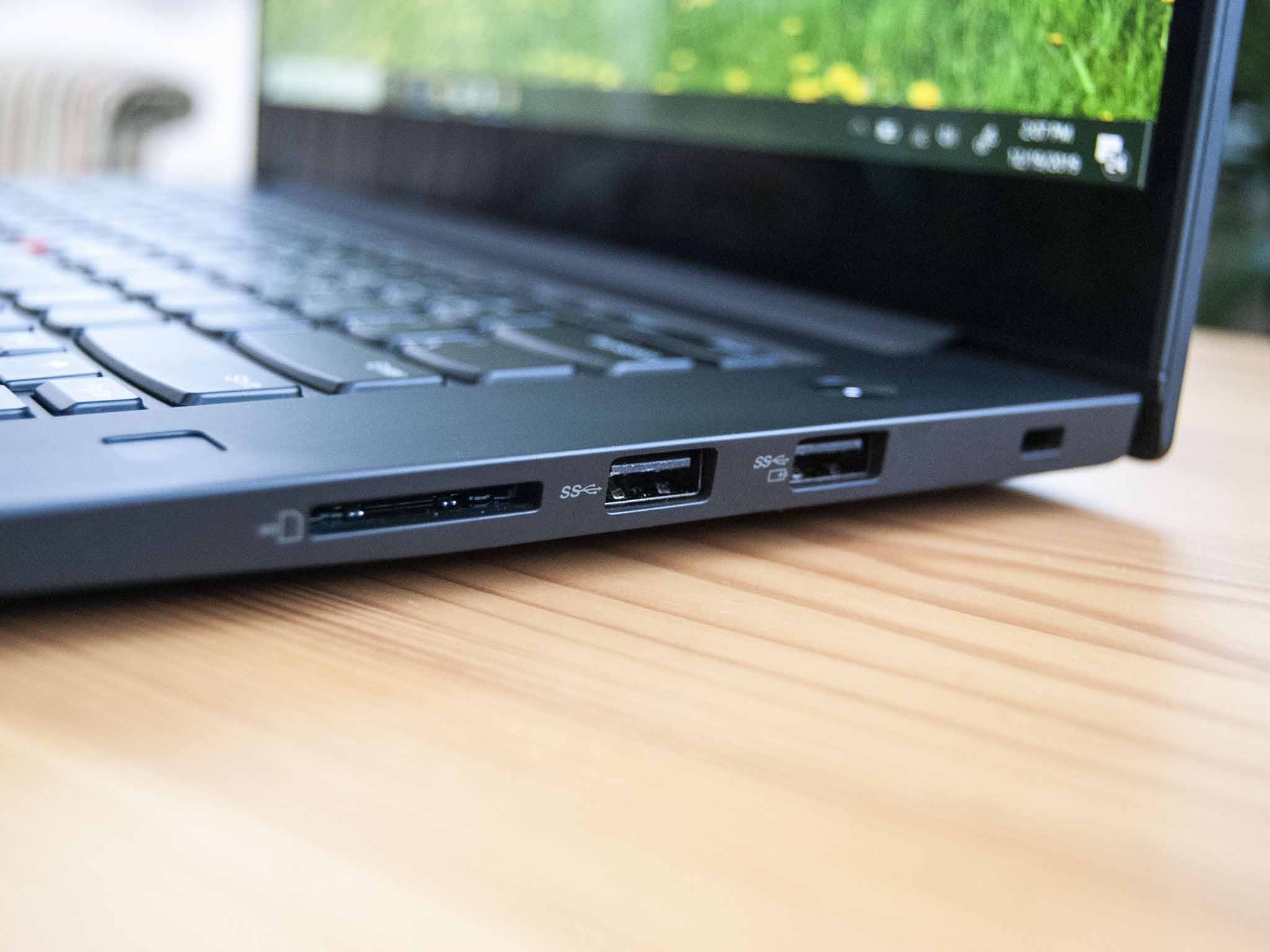
There are plenty of configuration options to choose from when outfitting an X1 Extreme or P1, and both will deliver exceptional performance considering the form factor. However, the P1 is available with Intel Xeon and NVIDIA Quadro hardware, while the X1 Extreme caps out at Intel Core and NVIDIA GTX hardware. It also has optional ECC RAM for those who need it. Along with plenty of ISV certifications that guarantee compatibility with major software, the P1 is the right choice for professionals who work with specialized design and development software.
The X1 Extreme and P1 were both tested during the review process, and you can see how they compare with some synthetic benchmarks.
CPU
Geekbench 5.0 Benchmarks (Higher is better)
| Device | CPU | Single core | Multi core |
|---|---|---|---|
| Lenovo ThinkPad P1 (Gen 2) | i7-9850H | 1,233 | 5,216 |
| Lenovo ThinkPad X1 Extreme (Gen 2) | i7-9850H | 1,160 | 4,168 |
Same CPU, better raw performance seen in single- and multi-core scores in the ThinkPad P1.
PCMark
PCMark 10 Express
| Device | Score |
|---|---|
| Lenovo ThinkPad P1 (Gen 2) | 4,969 |
| Lenovo ThinkPad X1 Extreme (Gen 2) | 4,915 |
The PCMark 10 Express test measures how well the system performs with general tasks, while the Extended version adds in some heavier work. The P1 scored 4,980 in the extended test, while the X1 Extreme managed 4,850.
3DMark
Time Spy
| Device | GPU | Score |
|---|---|---|
| Lenovo ThinkPad P1 (Gen 2) | Quadro T2000 | 2,956 |
| Lenovo ThinkPad X1 Extreme (Gen 2) | GTX 1650 Max-Q | 3,190 |
3DMark
Fire Strike
| Device | GPU | Score |
|---|---|---|
| Lenovo ThinkPad P1 (Gen 2) | Quadro T2000 | 6,632 |
| Lenovo ThinkPad X1 Extreme (Gen 2) | GTX 1650 Max-Q | 7,198 |
Cinebench
Cinebench (R20) (Higher is better)
| Device | CPU | Range |
|---|---|---|
| Lenovo ThinkPad P1 (Gen 2) | Core i7-9850H | 1,783 to 2,201 |
| Lenovo ThinkPad X1 Extreme (Gen 2) | Core i7-9850H | 1,730 to 2,495 |
Running Cinebench four times in a row, the scores show the following ranges. Typically, the results drop on successive runs due to thermal constraints on the processor.
SSD
CrystalDiskMark (Higher is better)
| Device | Read | Write |
|---|---|---|
| Lenovo ThinkPad P1 (Gen 2) | 3,508 MB/s | 3,010 MB/s |
| Lenovo ThinkPad X1 Extreme (Gen 2) | 3,416 MB/s | 3,016 MB/s |
The Samsung PM981 found here delivers extremely quick read and write speeds, and hardware can be upgraded down the road. Testing with PCMark's data drive benchmark, I saw a score of 2,119.
The battery is the same in both laptops, and you should find life similar depending on the display you choose. FHD models will deliver the best life, while UHD models will struggle to last a full workday.
When checking out, keep in mind that RAM and SSD can be easily upgraded in the future. If you want to save some money, you can go with a lesser configuration and add hardware as you see fit.
Go with the X1 Extreme (Gen 2) for a more casual workhorse
Though the X1 Extreme doesn't have the same specialized hardware options as the P1, it's still an outstanding laptop that delivers performance in a sleek and relatively light body. The addition of HDR in the 4K display is a boon for many, it holds onto robust security features, and it can be easily upgraded down the line.

Second-gen is a hit
The X1 Extreme is a great pick for just about anyone thanks to powerful hardware and beautiful display options.
Go with the ThinkPad P1 for a mobile workstation
Thanks to specialized performance hardware options and ISV certifications, the ThinkPad P1 is the better choice for those working with professional software. The addition of optional X-Rite Pantone color calibration for the 4K displays is an added boon.

Cale Hunt brings to Windows Central more than eight years of experience writing about laptops, PCs, accessories, games, and beyond. If it runs Windows or in some way complements the hardware, there’s a good chance he knows about it, has written about it, or is already busy testing it.
